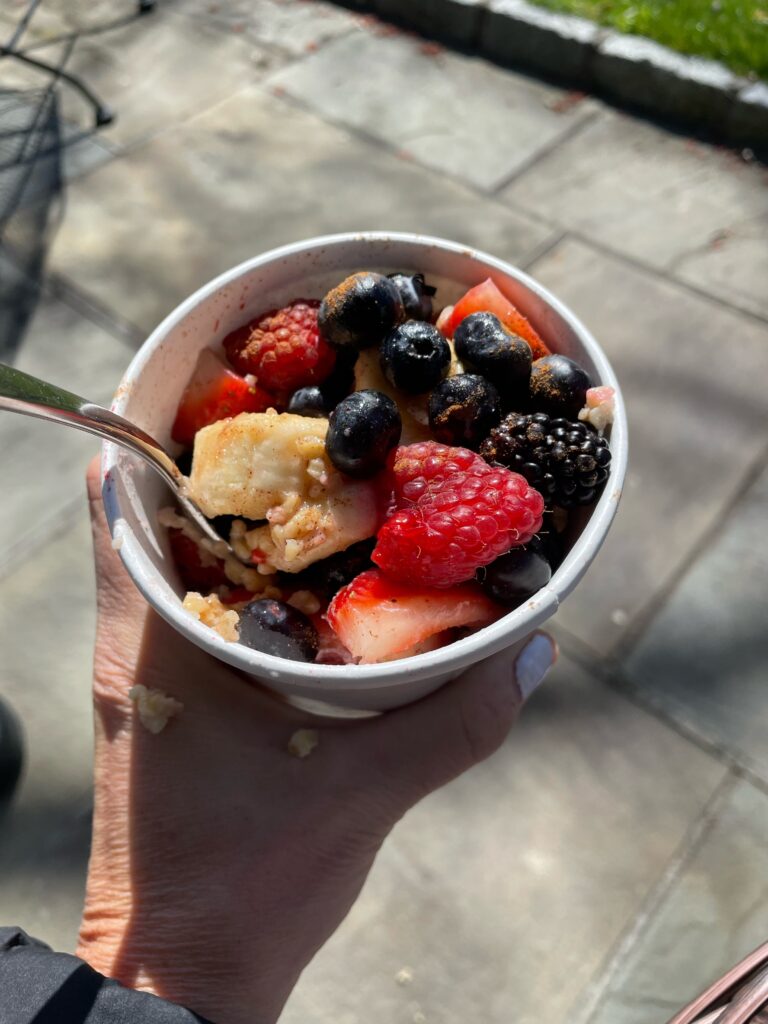Amy Stephens
MS, RDN, CSSD, CEDS
Licensed dietitian
specializing in sports nutrition
and eating disorders
MS, RDN, CSSD, CEDS
Licensed dietitian
specializing in sports nutrition
and eating disorders
Why is eating after a workout important?
Eating after a workout is important to optimize recovery, performance and overall health. Eating within one hour after a workout enhances recovery. This period of time is known as the glycogen window, during which nutrients are maximally absorbed into the body. Over the next 6-12 hours, absorption will continue, but at a slower rate. Consuming carbohydrates within the first hour after a workout aids in glycogen repletion while protein prevents further muscle breakdown. Nutrients consumed after a workout are important to facilitate adaptations during a training block and prevent injury. However, meeting nutritional requirements can be difficult if you’re experiencing nausea or have a decreased appetite.
Fueling after a workout is especially important if you have high energy demands such as training on consecutive days. Food will help your body recover faster in time for the next workout. Protein consumed after a workout helps damaged muscles rebuild and get stronger. In addition, food will keep up energy levels for the duration of the day so you can start your next workout feeling ready to train.

What causes a poor appetite and nausea?
Nausea or poor appetite develops as a result of stress hormones released during a training session. These hormones, cortisol and adrenaline, are necessary to produce power during a workout. While these hormones are elevated, other hormones that are responsible for hunger are suppressed. As a result, you may experience a poor appetite or even nausea after a workout. However, once exercise is completed, your hormones will reset and normal hunger cues will return eventually.
Dehydration and electrolyte imbalances can also cause a poor appetite and nausea.
How do I eat if I’m not hungry?
In the post-workout period, you may need to override your body’s natural cues so that you eat even if you don’t feel hungry. This is crucial for staying ahead in fueling your body’s recovery process.
Here are some tips if you feel nauseous:
Here are some tips if you have a poor appetite:
If nausea continues or worsens despite nutrition changes, reach out to your healthcare provider.
References
Burke LM, Kiens B, Ivy JL. Carbohydrates and fat for training and recovery. J Sports Sci. 2004 Jan;22(1):15-30. doi: 10.1080/0264041031000140527. PMID: 14971430.
Murray B, Rosenbloom C. Fundamentals of glycogen metabolism for coaches and athletes. Nutr Rev. 2018 Apr 1;76(4):243-259. doi: 10.1093/nutrit/nuy001. PMID: 29444266; PMCID: PMC6019055.
Kerksick, C. M., Arent, S., Schoenfeld, B. J., Stout, J. R., Campbell, B., Wilborn, C. D. International society of sports nutrition position stand: nutrient timing. Journal of the International Society of Sports Nutrition. 2017. 14(1). https://doi.org/10.1186/s12970-017-0189-4.